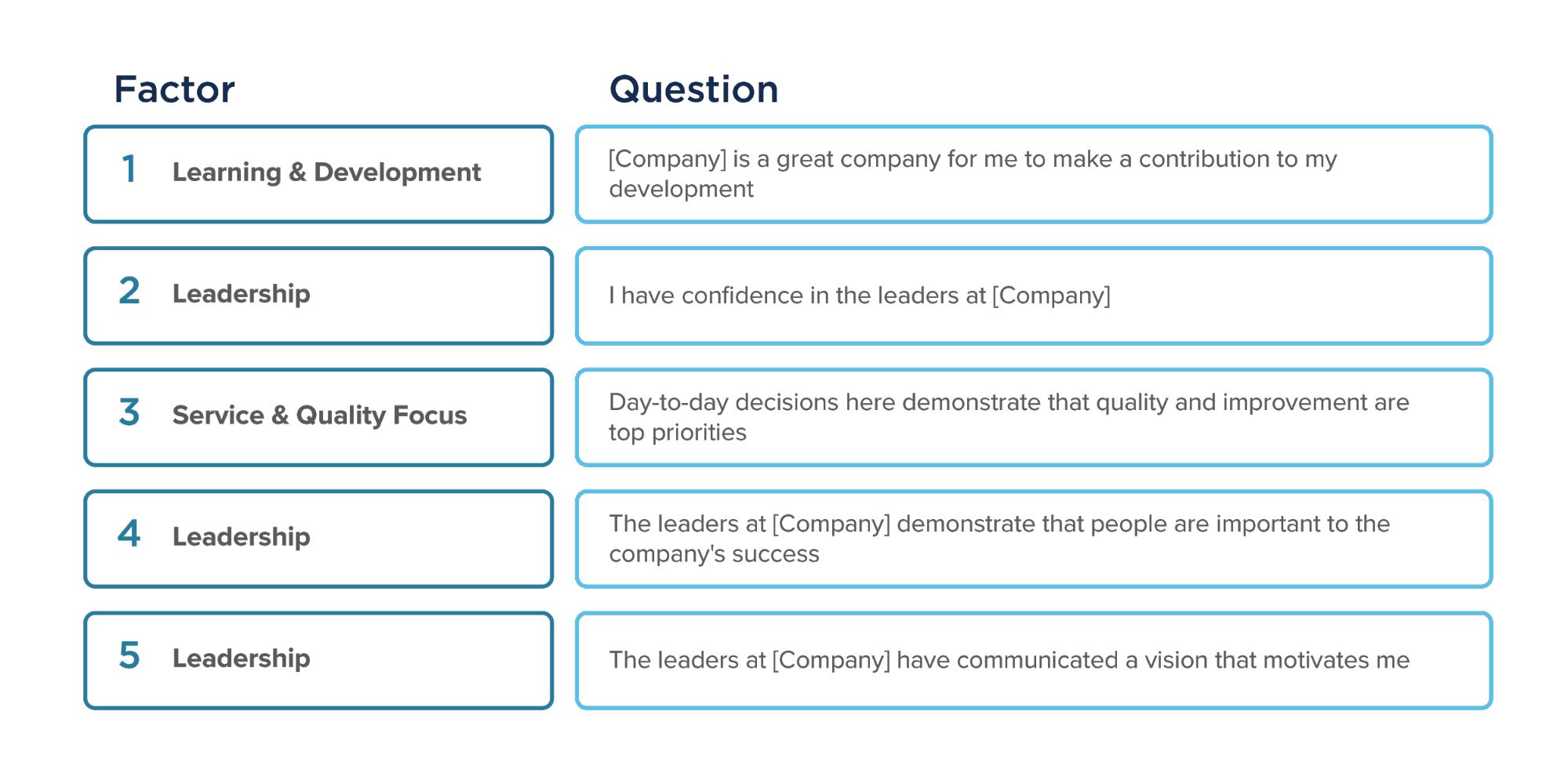A top driver of employee engagement across all regions and industries is an individual’s ability to contribute to their development. The question you might be asking on your employee engagement surveys is: This is a great company to contribute to my learning and development. The degree to which people at your organisationorganization agree or disagree with this statement has a serious impact on overall employee engagement. The top five drivers of employee engagement according to Culture Amp research are below.
Top five drivers of employee engagement

Source: Culture Amp
Feedback is essential to individual development. Because feedback is often delivered as part of performance programs, the way that an organisationorganization designs their approach to performance has an impact on an individual’s perception of whether an organisationorganization is a good place for them to develop.
The role of performance reviews
The traditional performance review approach is broadly regarded to be demotivating for employees and people leaders. Many suggest traditional performance processes foster disengagement. However, performance management and annual reviews are important tools in aligning the organisationorganization’s objectives with individual KPIs and getting an overall understanding of competency levels, skills gaps and training requirements throughout an organisationorganization.
Over the years, performance reviews have undergone a renaissance. In the new framework, the emphasis has shifted from assessing past performance to staying focused on clear, future goals. The aim now is to provide ongoing feedback that helps drive performance and support the development of individuals – which we know has a positive impact on employee engagement.
Instead of one review each year, organisationsorganizations are empowering employees and people leaders to build performance conversations into business-as-usual activities. From coaching and one-on-one meetings, to providing feedback on-the-go and ensuring individual goals are aligned with organisationalorganizational goals, the opportunities to evolve and enhance feedback are endless.
Adopt the best practices for your organisationorganization
If you’re looking to implement an effective performance approach, it helps to understand the objectives first. How will your organisationorganization strike the right balance between productivity and engagement? Do you want to place emphasis on learning and development or pay-for-performance? It’s also good to be prepared to accept that what works for one organisationorganization might not work for others and there will be multiple ‘right practices’.
With your organisationorganization in mind, consider the following:
- Embed performance conversations as part of a business-as-usual approach to help drive stronger outcomes.
- Invest in managers and leaders. Coach them to give continuous feedback and have difficult conversations.
- Shift the focus aways from conversations about ‘rating past performance’ to ‘what needs to be done next’.
- Engage a data-driven approach to create a richer view of employees’ performance.
- Constantly simplify the process to help increase adoption.
- Create a culture that values people, performance and strong leadership in which performance management can form the basis to drive employee engagement.
Fresh insights for HR
Stay up to date with HR trends, tips and more when you sign up for our industry newsletter






